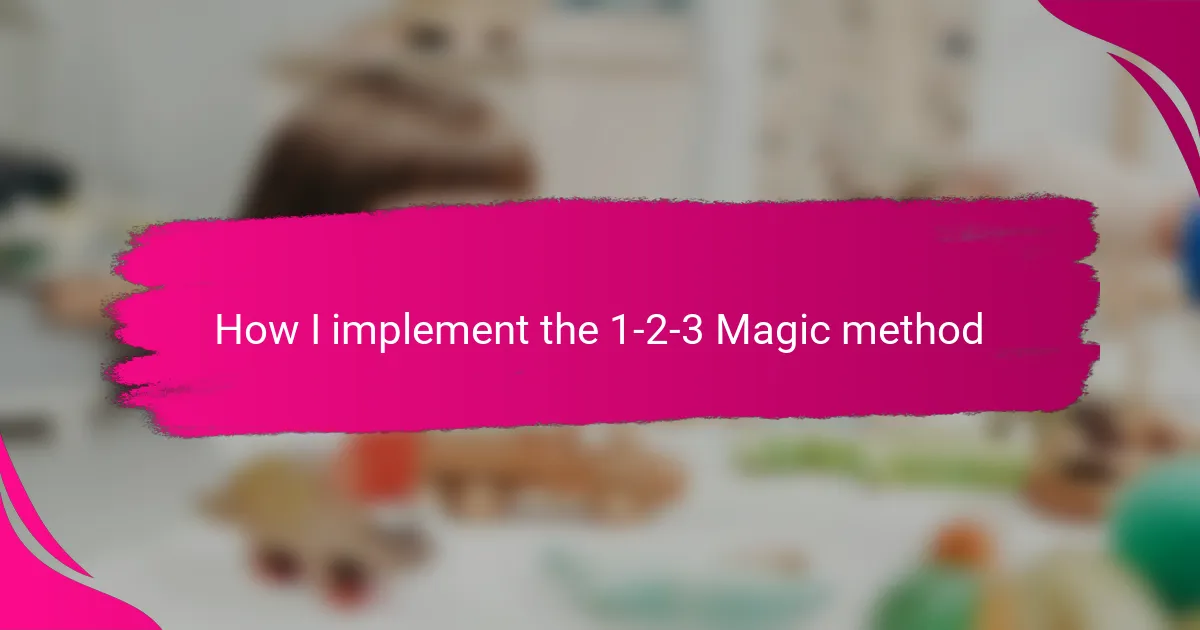Key takeaways
- The 1-2-3 Magic Method offers a simple and effective approach to discipline, using counting to set clear expectations and consequences.
- Staying calm and consistent is crucial; it helps both parents and children respond better to discipline.
- Natural consequences and allowing children to self-regulate promote accountability, fostering a positive learning environment.
- Adjustments to the method, such as customizing consequences, can enhance its effectiveness and resonate more with individual family dynamics.
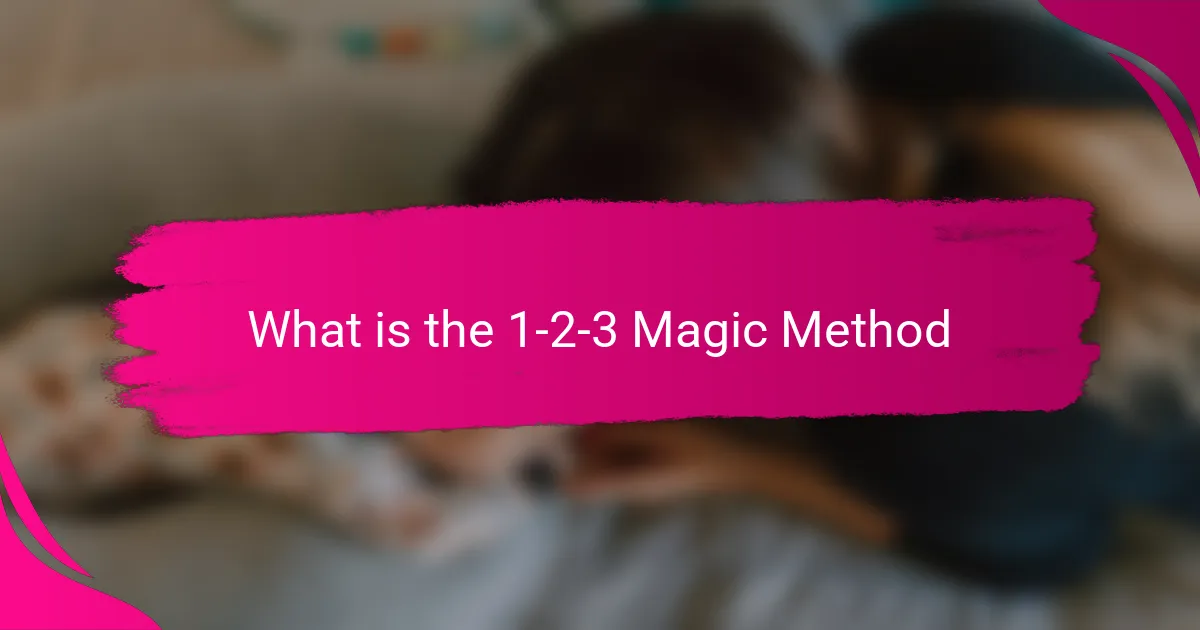
What is the 1-2-3 Magic Method
The 1-2-3 Magic Method is a simple discipline strategy designed to help parents manage their child’s behavior without yelling or complex explanations. It relies on counting—giving a child a clear warning with “1,” a second warning with “2,” and then a consequence on “3.” This straightforward approach really appealed to me because it cuts through the noise and keeps things calm.
I remember feeling overwhelmed before I tried this method, constantly caught in power struggles that left me and my kids frustrated. But with 1-2-3 Magic, the structure helped my children understand boundaries, and surprisingly, it restored a sense of peace at home. Have you ever noticed how children respond better when rules are clear and consistent?
What I find particularly powerful about this method is its balance between firmness and patience. It doesn’t rely on punishment but encourages accountability, teaching kids to think twice before acting out. Isn’t that the kind of positive discipline we all hope for?
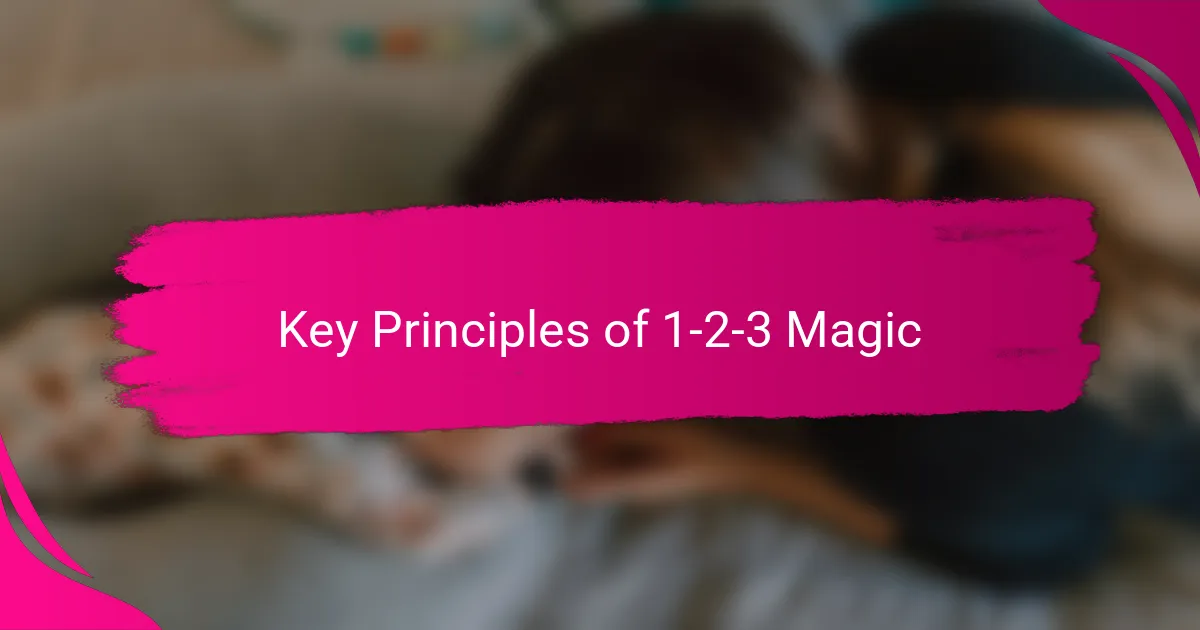
Key Principles of 1-2-3 Magic
One principle that truly stands out to me is simplicity. The method’s reliance on just three clear steps means there’s no ambiguity—my kids immediately know what to expect. When I first started, this clarity stopped the endless debates and gave me a much-needed sense of control.
Another key idea is staying calm and consistent. It took effort at first not to raise my voice or get frustrated, but I quickly saw how much calmer my children became too. It made me wonder, how often do we underestimate the power of our own tone in shaping behavior?
Finally, the method emphasizes letting natural consequences teach lessons instead of harsh punishments. This approach felt much more respectful and encouraged my kids to think about their actions rather than just fearing a quick penalty. Have you noticed how children respond better when they’re part of the learning process rather than just being corrected?
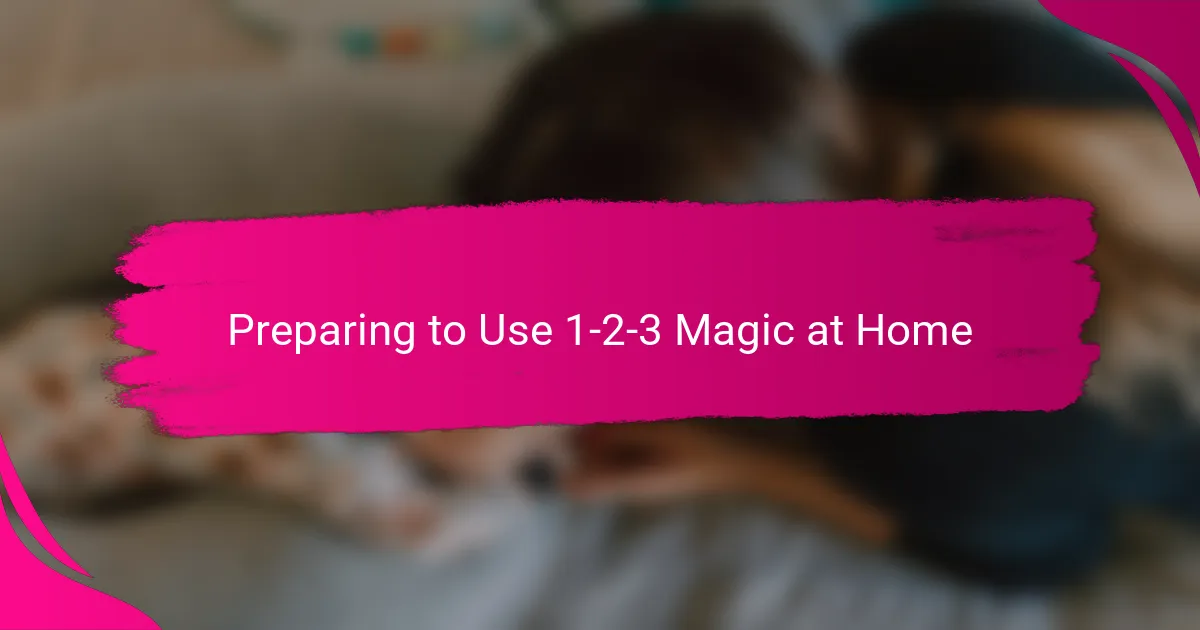
Preparing to Use 1-2-3 Magic at Home
Before I officially started using 1-2-3 Magic at home, I realized the importance of setting my own mindset first. I needed to commit to staying calm and consistent, even when my patience was tested—because if I wasn’t ready to follow through, the method simply wouldn’t work. Have you ever tried to enforce rules when your own stress was sky-high? That can make discipline feel impossible.
I also took some time to explain the method to my kids in a way they could understand. This wasn’t about just laying down the rules but inviting them into the process so they felt clear on what would happen at each step. This small preparation helped reduce confusion and resistance once we got started.
Finally, I made sure to remove distractions or any competing voices that might undermine the process. Whether it was turning off the TV or asking other caregivers to stay on the same page, creating a unified front was key. I found that being proactive about this kind of preparation saved me from a lot of frustration later on.
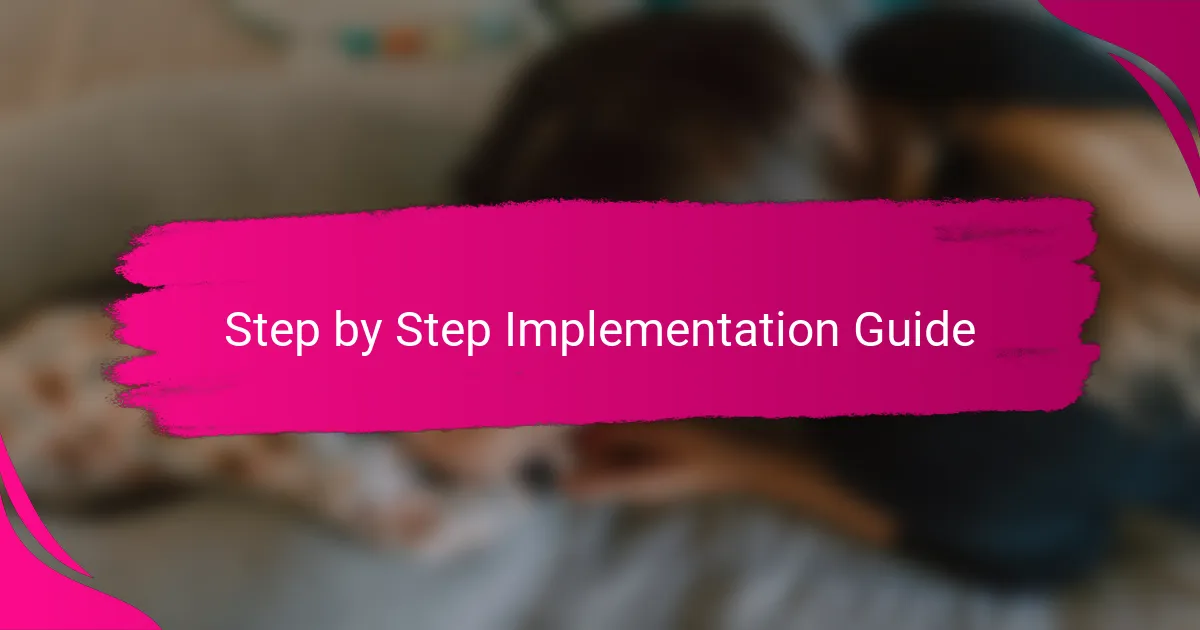
Step by Step Implementation Guide
The first step I took was to clearly explain the counting system to my kids, making sure they understood that “1” and “2” were gentle warnings, and “3” meant a consequence. This clarity made a huge difference—no more guessing games or surprise reactions, which often led to confusion and frustration. Have you ever been in a situation where your child just didn’t quite get what you expected? I did, until I broke it down simply with this method.
Next, I focused on staying calm every time I said the numbers, even when my patience was running thin. It wasn’t always easy, but I noticed that the less I raised my voice or showed frustration, the quicker my kids adjusted their behavior. It really made me think about how our emotions shape the discipline process more than we realize.
Finally, consistency was my game-changer. I made a conscious effort to follow through every time we reached “3,” without exceptions. That predictability helped my children respect the rules because they knew I meant what I said. Isn’t it amazing how predictable consequences can actually make life smoother for everyone?

Common Challenges and Solutions
One challenge I faced early on was staying calm when emotions ran high—it’s surprisingly tough not to snap in the moment. I found that taking a deep breath before delivering each count helped me keep my cool, which in turn made my kids more responsive. Have you ever noticed how a calm tone can defuse tension before it even starts?
Another hurdle was consistency, especially on busy or exhausting days when skipping the third count seemed easier. But I soon realized that missing consequences weakened the method’s effectiveness. Sticking to “3” every time was frustrating at first, but it quickly built trust and respect—my kids knew I meant what I said.
Sometimes, my children tried to test the limits by pushing back after the second warning, hoping to avoid the third. When this happened, I reminded myself that patience was key and not to get tangled in arguments. Staying firm and quiet during that pause often led them to self-correct, which felt like a small victory for both of us. Have you experienced that moment when silence speaks louder than words?

Personal Results and Adjustments
At first, I noticed my kids responded well, but I had to tweak how quickly I counted to “3.” Sometimes, waiting just a little longer before the final count gave them a moment to self-regulate, which felt empowering for them and less stressful for me. Have you ever adjusted a method slightly and found that small change made a big difference?
There were moments when I slipped up and lost my calm, reminding me that this method requires ongoing patience and practice. When that happened, I took a step back, apologized to my kids, and restarted the process—modeling accountability felt just as important as enforcing the rules. Doesn’t it make sense that showing our own imperfections teaches kids resilience?
Over time, I adapted the consequences to better fit my family’s unique needs. Instead of just time-outs, sometimes I used natural consequences related directly to the behavior, which seemed more relatable and fair to my children. It made me realize that flexibility within structure can actually strengthen respect and cooperation. Have you tried customizing discipline to make it feel more personal?

Tips for Consistent Success with 1-2-3 Magic
One tip that really helped me keep the 1-2-3 Magic method working smoothly was setting a clear intention before every interaction. I reminded myself to stay calm and neutral, even when my patience wore thin. Have you ever noticed how your mood can either fuel a power struggle or help diffuse it? For me, staying centered made all the difference.
I also learned that consistency isn’t just a nice-to-have—it’s absolutely essential. Missing a “3” once in a while might seem harmless, but it quickly led to confusion and testing the boundaries. I committed to following through every single time, and that steady predictability built trust with my kids. Doesn’t it feel better when everyone knows exactly where the line is?
Another practical tip was to keep the warnings short and unemotional. Instead of explaining or negotiating during the counts, I simply said “1,” “2,” then “3,” and paused. This quiet firmness often gave my kids the space to self-correct without escalation. Have you tried resisting the urge to justify or argue? I found that silence often spoke louder than any explanation.
